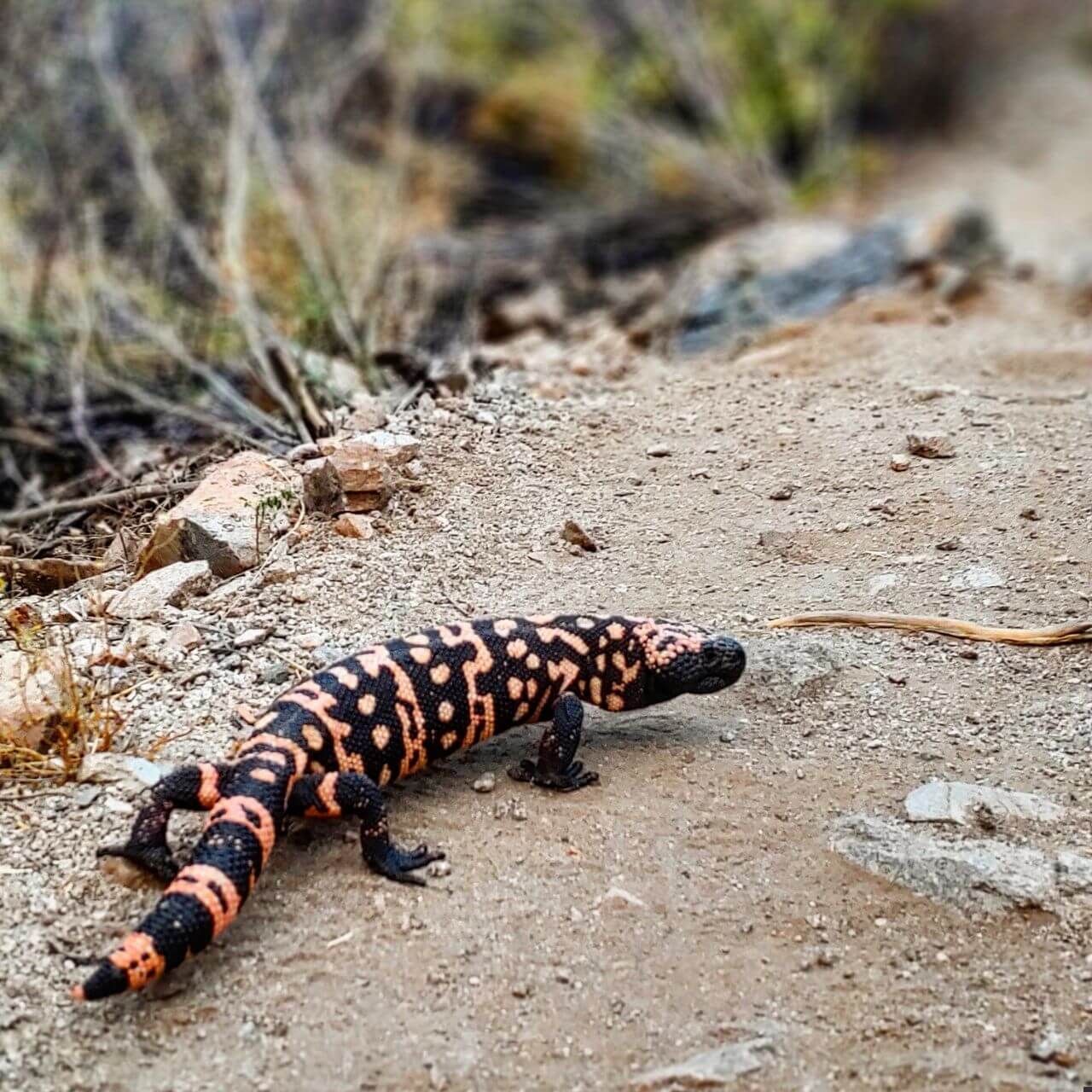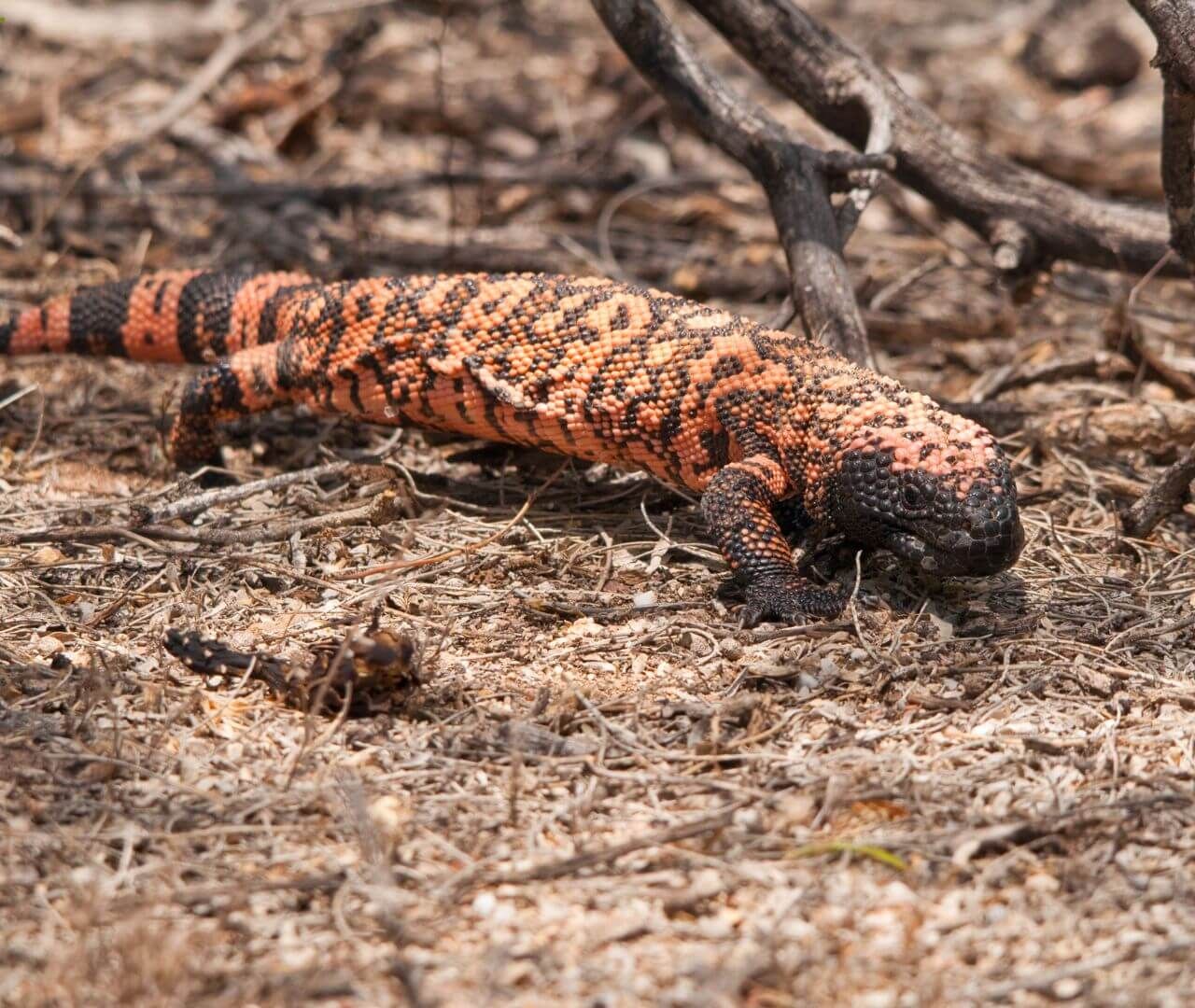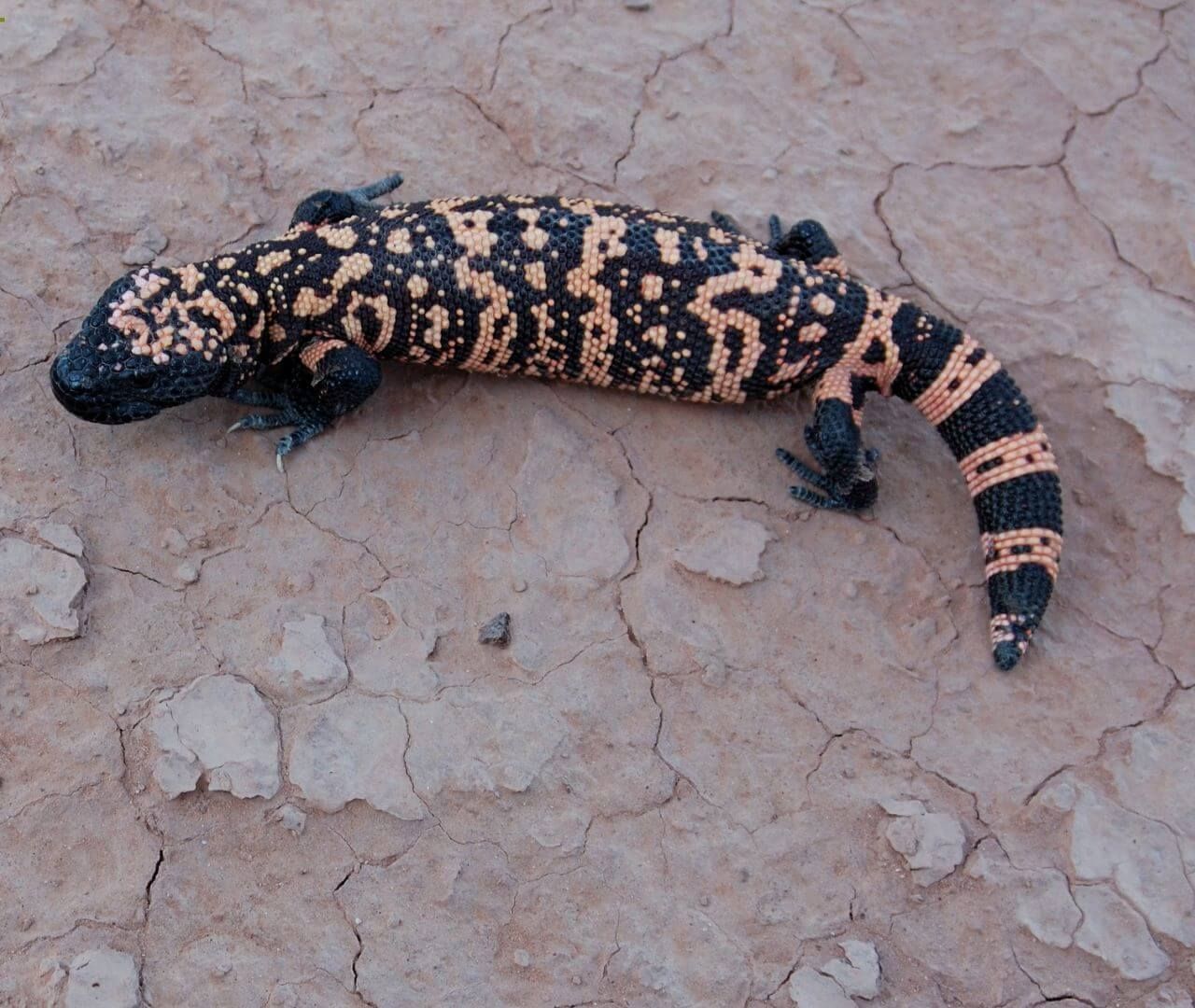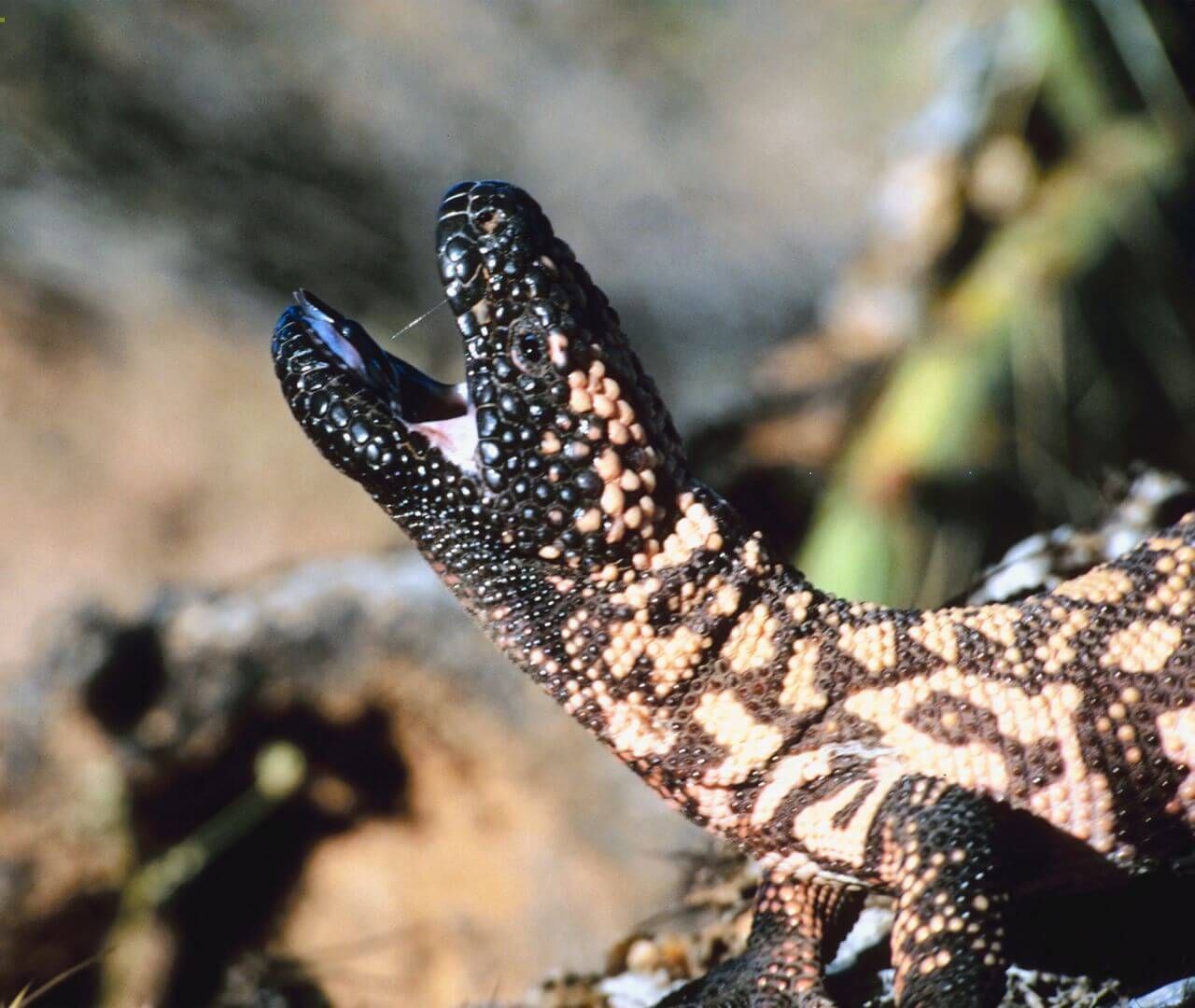Gila Monsters

Let's Learn About Gila Monsters
Word of the Week
Osteoderm
Osteoderms are small, bony structures in the skin or scales of some animals. Gila monsters and their relatives appear bumpy because of their osteoderms.
The prefix "osteo-" means bone, while "derm" means skin. Osteoderm means bone-skin!
Fast Facts

Where do Gila monsters live?
Gila monsters live in the southwestern United States and northern Mexico.
Gila monsters are adapted for desert ecosystems. They have several adaptations that help them survive in hot, dry ecosystems.
What do Gila monsters eat?
Gila monsters are carnivores.
Their typically eat small, slow moving animals like young mice and squirrels or bird chicks. They also feed heavily on bird and reptile eggs. They find prey by smelling with their tongue.


What do Gila monsters share with other monitors?
Gila monsters have many unusual traits in common, such as...
- Bony scales called osteoderms
- A plump tail that stores fat
- Sharp claws good for digging
- A venomous bite
- The ability to smell with their tongue
How many Gila monsters are there?
Gila monsters are one species of lizard.
Gila monsters are not listed as endangered. However, scientists do not have an accurate estimation of how many exist in the wild because they spend so much time hidden underground.

Species Spotlight
Gila Monsters Storing Fat
Lizards use their tails for many things. Chameleons use their tails for grasping, geckos drop their tails to escape predators, and Gila monsters store fat in their tails. Storing fat is an adaptation that animals use in extreme climates to survive when food and water are scarce.
But how does this work?
Fat is a nutrient that builds up in an animal’s body as they eat. Fat stores energy, and the right amount of fat is important for an animal’s health and survival.
Some animals store fat in specific parts of their bodies. Gila monsters store fat in their tail while camels store fat in their humps. When food and water are scarce, the fat metabolizes, or breaks down. The broken-down fat becomes two very important things: energy and water. They rely on the extra energy and water when food and drinking water are not available.
These animals eat a lot when food is available to build a large fat supply. Camels eat more than 50 lbs of food in a single day, while Gila monsters eat up to ⅓ of their body weight in one meal. As the fat is used up, the animal’s body changes. The Gila monster's tail and camel’s humps become smaller. Building a large enough fat supply can be the difference between life and death when food is scarce.
Conservation Corner
Gila Monsters Helping Diabetics
There are countless reasons to protect wildlife and nature. For many of us, loving animals is a good enough reason. Animals also have jobs in their ecosystem that keep it balanced and healthy. These ecosystems provide us with food and oxygen. However, if neither of those reasons are good enough, there is another.
Some plants and animals produce resources that can be used to treat diseases. For example, special compounds in Gila monster venom can be used to create medicine for people with diabetes. Diabetes is a disease that affects the level of sugar in our blood. Scientists frequently discover how we can copy things animals make or do to make new medicines or other advancements in the medical field.
Scientists hypothesize that millions of plant and animal species have not been discovered yet. Ecosystems like rainforests, the deep sea, and barren deserts are hard for scientists to explore, making it challenging for them to discover new species. Imagine how many of these millions of species could provide tools to make life-changing medicines, and we just don’t know it yet.
It’s not just important to protect animals, it’s also important to protect these ecosystems. They could be home to very important species waiting to be discovered.
Gila Monster Mix Up
Determine if each statement about Gila monsters is true or false.
Learn More!
Glossary
Adaptation
The process by which a species becomes more fit for its environment over the course of several generations. It is a result of natural selection.
Brumation
A state of dormancy or inactivity that some cold-blooded animals enter during cold winter months.
Camouflage
The ability for an organism to blend into their surroundings usually to hide from prey or predators.
Carnivore
An animal that primarily eats meat.
Desert
An ecosystem that receives very little rain.
Diabetes
A disease that effects the body's ability to produce insulin and disrupts the amount of sugar in the bloodstream.
Dominant
To be the most powerful animal in the group.
Ectotherm
An animal that relies on the outside temperature to regulate their body temperature (reptiles and amphibians). Also known as cold-blooded.
Energy
[In biology] The properties used by living organisms to perform normal functions that originate as light energy from the sun and move throughout an ecosystem through food webs.
Metabolize
The process of turning food (or fat) into energy.
Osteoderm
A bony plate found in the skin of animals like Gila monsters, crocodiles, and Komodo dragons.
Predator
An animal that hunts other animals for food.
Prey
An animal that is hunted and eaten by another animal.
Reptile
A group of ectothermic (cold-blooded) vertebrates that are covered in scales and generally lay eggs.
Species
A closely related group of animals with similar characteristics that are capable of reproducing (example: tigers).
Venom
A toxin that is injected into prey through teeth or a stinger.




